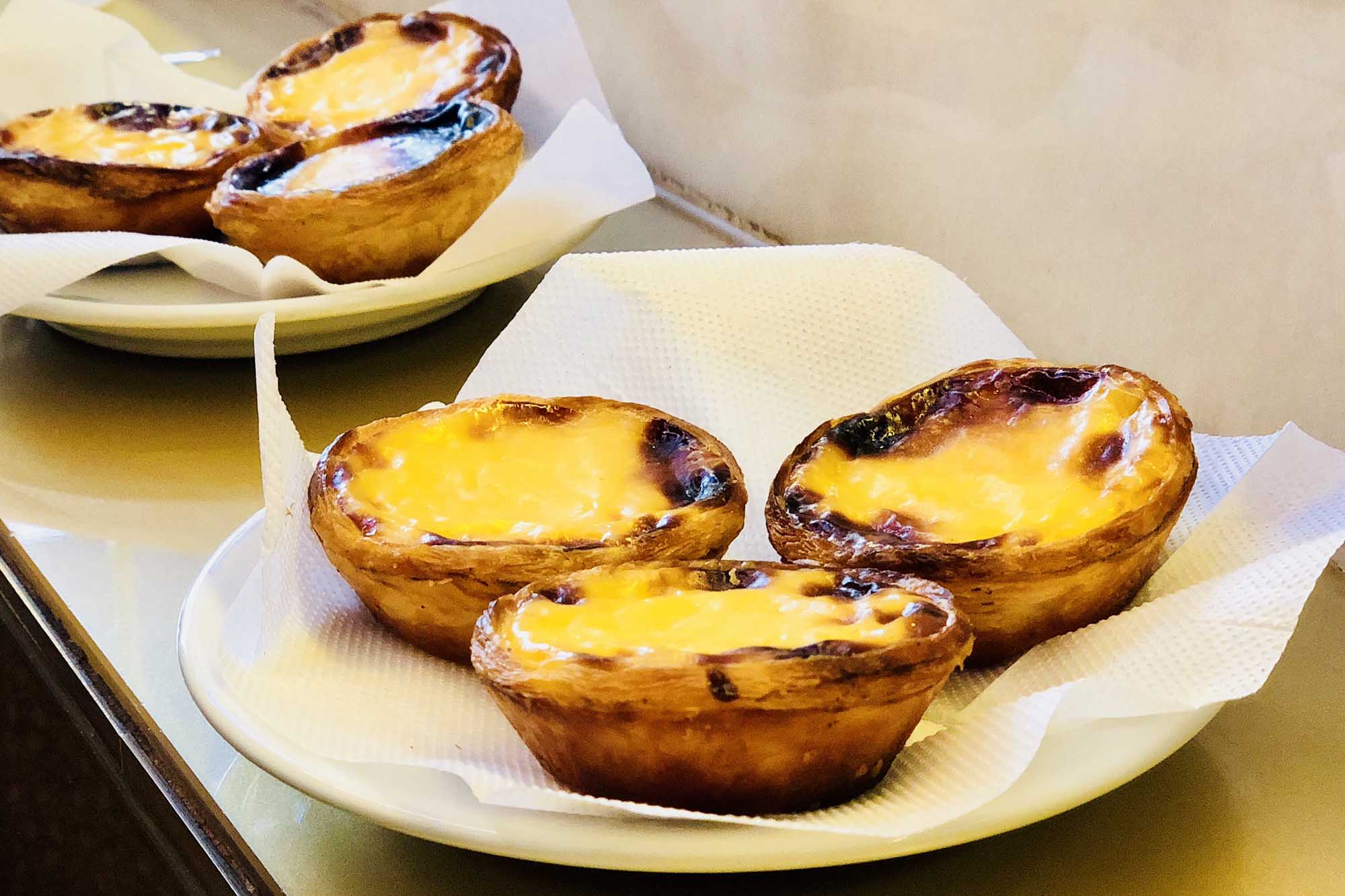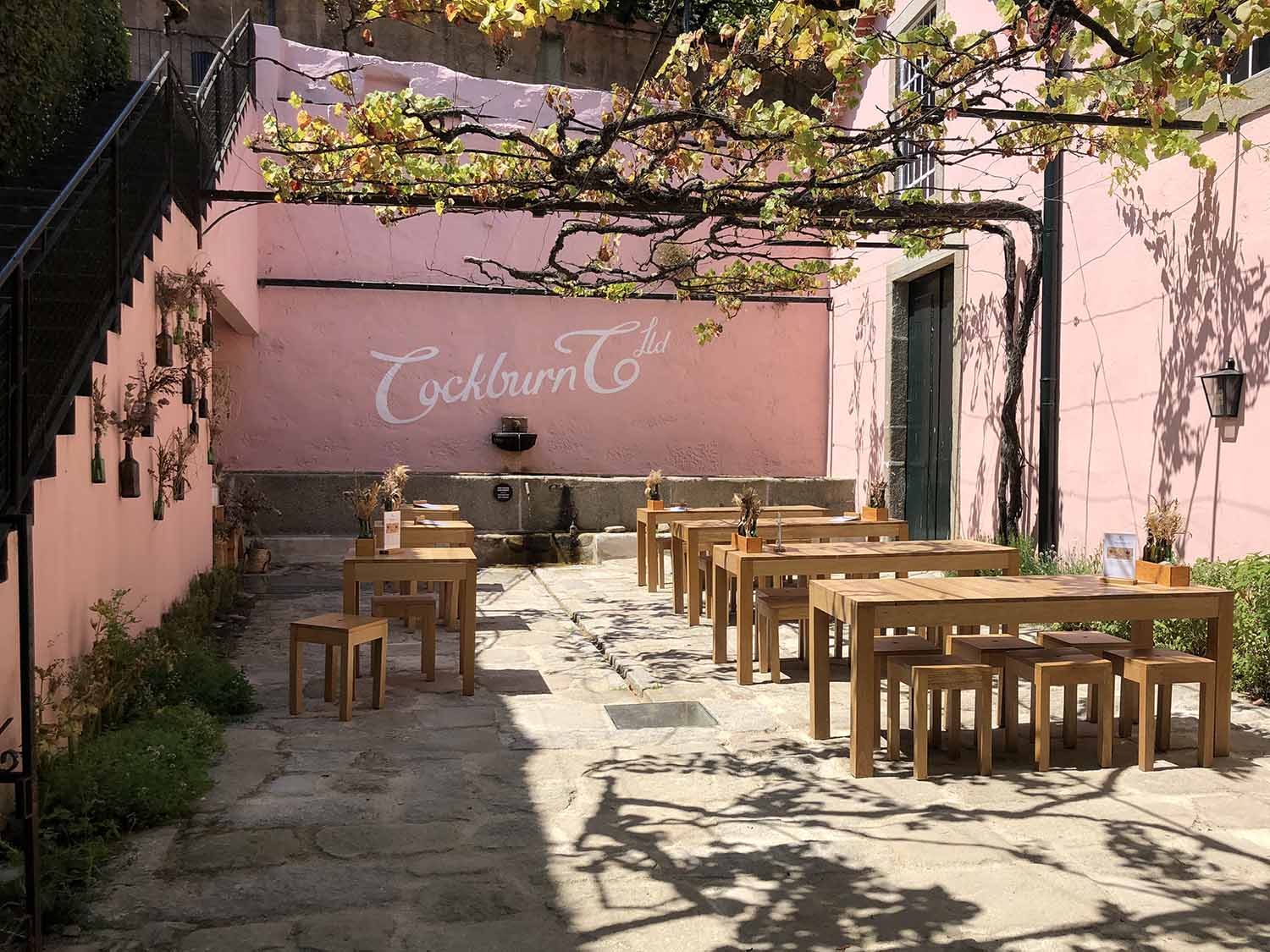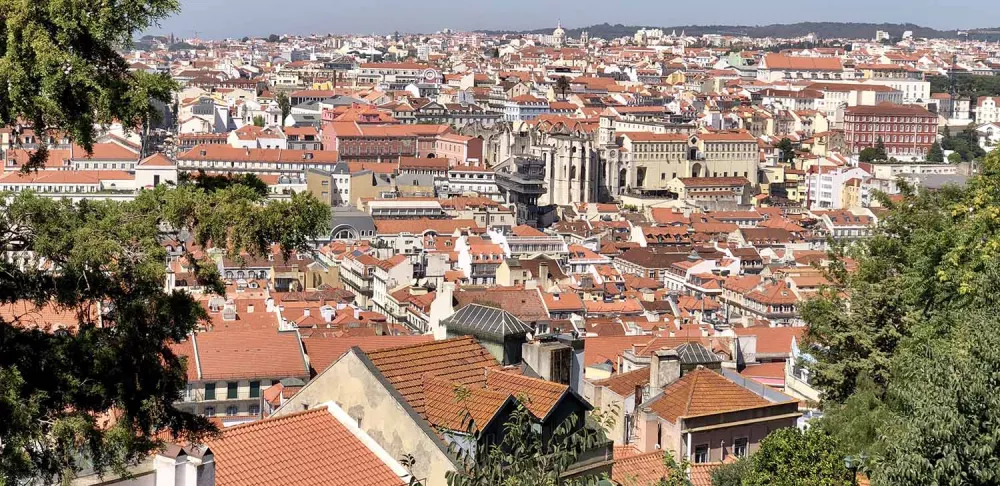My travels, as I’m sure most readers can relate, are driven by food. Gastronomy is always a good excuse for the journey, so having noticed my social streams fill up with images of pasteis de natas, Lisbon’s iconic pastry, I’ve had Portugal on my destination shortlist. As luck would have it, my family suggests this destination for a group vacation and without hesitation I say, “let’s do it.” The country delivers on many levels: architecture, panoramas, history, weather, and, as I anticipated, gastronomic offerings.
Here are five reasons culinary travelers should head to Portugal.
Dessert First
Lucy, our tour guide from Culinary Backstreets, fills us in on the fact that the Portuguese have an enormous penchant for sweets. A typical breakfast consists of an espresso, (uma bica or um pingo with a drop of milk) and something sweet, like a healthy slice of cake. And if there is one culinary item that’s synonymous with Lisbon, it’s pasteis de nata (custard tarts). These three-bite, hand-held, egg custards are spiced with cinnamon, encased in a puff pastry, extremely sweet and quite addictive. Baked at a high temperature, which results in a nice brown appearance, it is the singular food to eat in Lisbon. The birthplace of this pastry, historic Pasteis de Belém, has been churning it out since 1837. People flock to get their Instagram shots against the shop’s iconic blue-and-white tiles. Fortunately, pasteis de nata are equally outstanding and much easier to obtain at Mateigaria, a factory where you can watch the pastry being made, which has an outpost at Time Out Market Lisboa, a well-curated food hall.

Hospitality
With the exceptional and varied meals, whether at holes in the wall or fine-dining restaurants, comes tremendous service. At every hotel reception desk and in each dining room we visit, it’s as if Danny Meyer is whispering in the staff’s ear. Service is provided with a smile, food and hospitality professionals are ready to please, no request is disregarded, and everyone is very accommodating and genuine — guests walk away happy.
The most notable example of this is in the gastronomic region of Alentejo at Tábua do Naldo, a postage stamp-sized restaurant in the historic town of Evora, a UNESCO World Heritage site. Here, Chef Naldo welcomes diners, studies them, and listens to their likes and dislikes. He’s almost like a doctor assessing his patients. There’s no need to read the menu, he doesn’t blink at dietary restrictions or preferences, he does all the thinking for his guests — and it works. This is a memorable experience due to sheer hospitality.
Seafood
With more than 1,000 miles of coastline bordering the Atlantic and Mediterranean seas, Portugal has an abundance of fresh seafood. An extensive fish selection, listed by the kilo, is commonplace on menus. As you’re deciding, servers parade whole fish around the restaurant to present to guests, who ensure it is to their liking before committing. Cooking may also happen right in front of your eyes, especially in Matosinhos, the port city on the outskirts of Porto. There, you’ll find streets lined with men working hot grills, as smoke billows in their faces, cooking fish brought straight from the dock or nearby market. If it’s not bacalhau, dried and salted cod, the fish is simply prepared: grilled and dressed with lemon and olive oil, filleted tableside, and served with garlicky, olive oil-laden potatoes and vegetables.

There are also many seafood soups and stews, like caldeirada de peixe (fishermen’s stew), açorda de camarão (a thick bread soup with a slow-cooked egg, garlic and shrimp), or arroz de peixe (a brothy rice with pieces of white fish seasoned with cilantro, served in a pot).
An Underexposed Celebrity Chef
Does the name José Avillez ring a bell? Perhaps, if you’ve committed the World’s 50 Best Restaurant list to memory, the answer is yes. If not, Avillez’s Lisbon restaurant Belcanto landed at No. 75 (the list includes 100) in 2018, No. 85 in 2017 and No. 91 in 2015. Belcanto has also received two Michelin stars and Avillez has published cookbooks, appeared on TV shows and has a mini restaurant empire that stretches from Lisbon to Porto. In Portugal, he’s the “it” chef and deservedly so. Avillez puts a modern spin on classic Portuguese dishes, sometimes playful and other times elevating the ingredients in classic recipes, from a simple steak sandwich executed perfectly, to a whimsical strawberry pavlova served in a takeout box or fish stew accented with mint. The words are taken out of our mouths when we hear from across the dining room, “this chef really should open a restaurant in Los Angeles.” Yes, that would be nice. And if not, we have another reason to return Portugal.
Enotourism
There are 250 grape varieties growing in Portugal, and perhaps the most well-known wine export of them all is vinho verde, which literally translates to “green wine” to indicate that it is made with young grapes. It’s on virtually every menu in Lisbon, and is crisp, fruity, very easy to drink and affordable, usually 3-3.50 euros (about $3.50 to $4) per glass. Oenophiles should make a trip to Portugal’s fertile Northwestern region where most of this wine is produced. The more accessible region to the culinary traveler is the stunning Douro Valley, just a day trip from the country’s second-largest city, Porto. It’s worth taking a few days to explore the quintas (country accommodations) along the picturesque river, but you don’t have to leave Porto to experience the port-making process. Across the Douro River in Vila Nova de Gaia, port cellars age the fortified wine to maturity and are open for tours and tastings.

I pick (slightly at random) Cockburn’s, which happens to have the largest wooden port cellar and collection of oak barrels. One of the most fascinating parts of the tour is the coopering room. It claims to be the only port company that still has a working cooperage employing seven coopers. The coopers do not construct new barrels; they repair used barrels with new staves. This keeps the essence of the wine that has been in the oak for more than a century. The tour lasts more than an hour and ends with a tasting of white port, ruby port, tawny port and Cockburn’s Special Reserve.
Cook with global flavors at ICE Los Angeles and see where career students can travel abroad.




